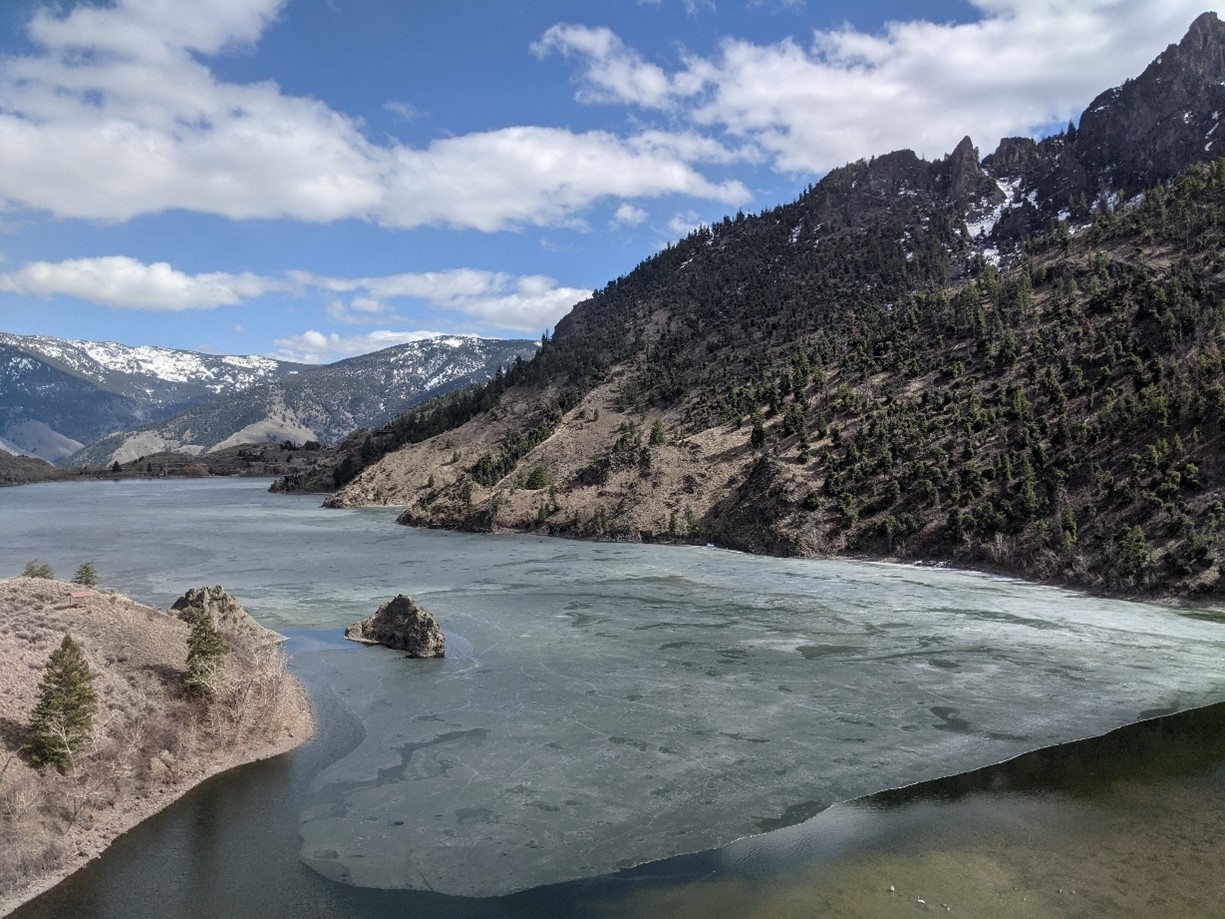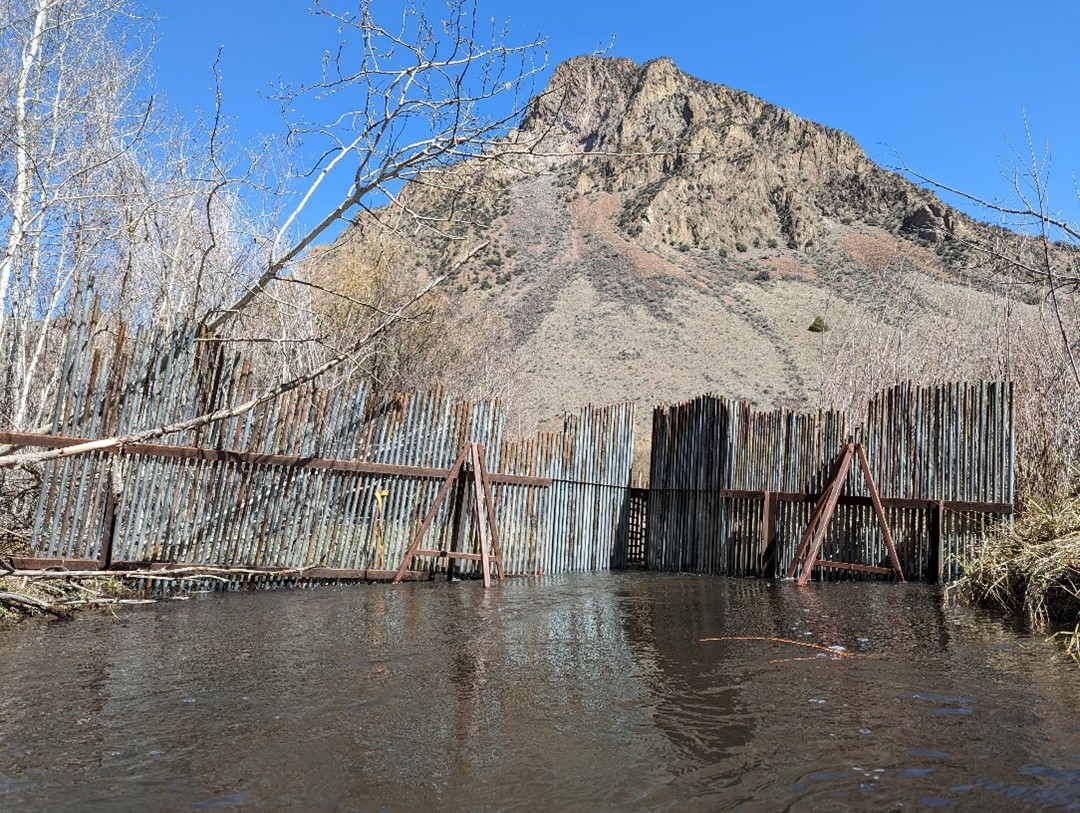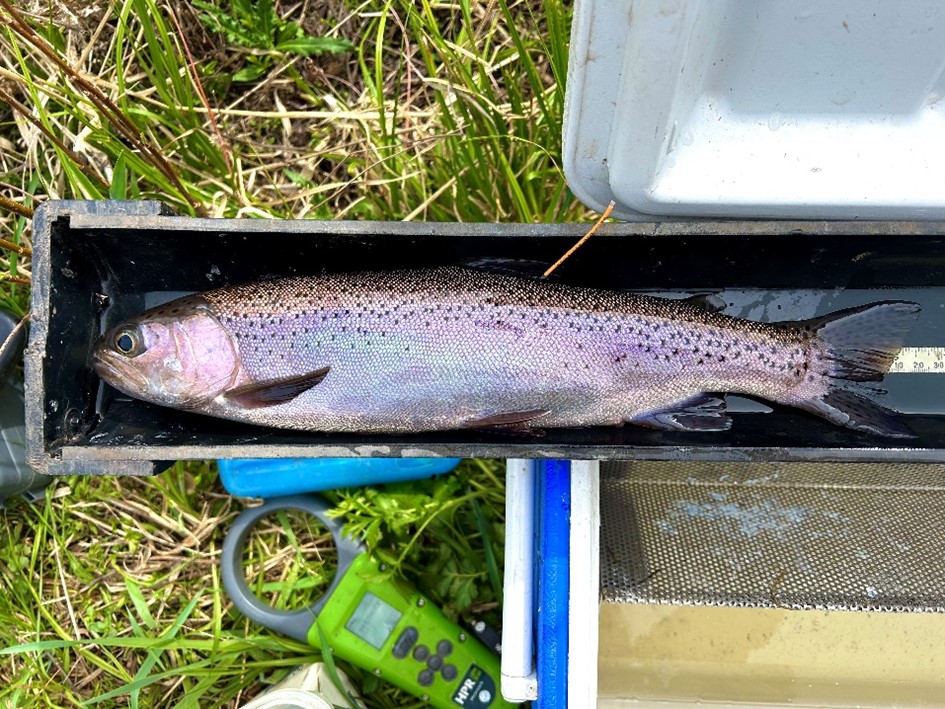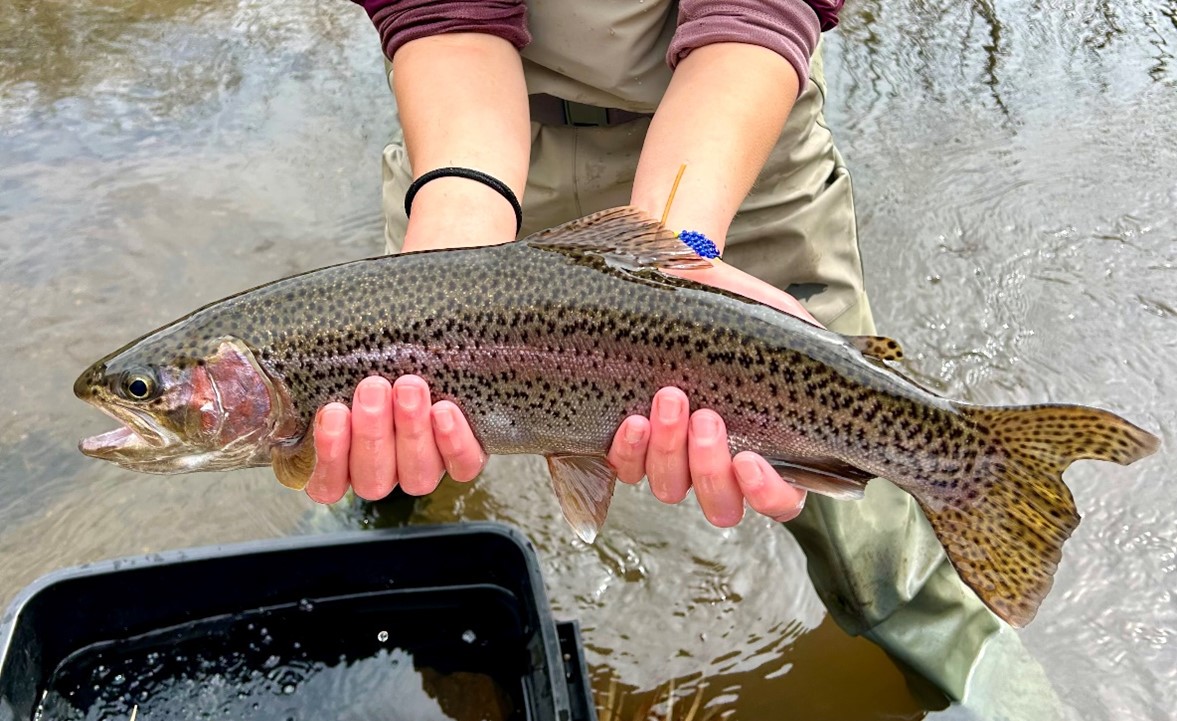About 12 miles south of Salmon, Williams Lake sits nestled in the mountains above the Salmon River at an elevation around 5,400 feet. This 180-acre lake has long been a favorite retreat for many anglers that enjoyed the Rainbow Trout fishing and fine scenery. In recent years, there has been some concern about the health of the Rainbow Trout population in Williams Lake regarding potential competition with Bridgelip Suckers in the lake. Bridgelip Suckers, while native to the Salmon River watershed, were only just recently documented in Williams Lake (2017). Homeowners and anglers have expressed their unease over how might this newcomer interact with Rainbow Trout, and if management is warranted to mitigate any potential effects. So, to assess the current status of the Rainbow Trout and Bridgelip Sucker populations, an in-depth look at the lake is planned for 2023. To do this, IDFG will investigate a couple of key population metrics for Rainbow Trout, starting with the strength of the spawning run.

2023 Williams Lake Fishery Study, Part 1
Counting spawning fish shows strong trout population

This spring, Idaho Fish and Game (IDFG) operated a picket weir in Lake Creek, the inlet stream of Williams Lake near Salmon, Idaho. Biologists used the weir to monitor the upstream spawning run of Rainbow Trout. A picket weir takes advantage of a migratory fish’s natural urge to move upstream during the spawning season. The aluminum pickets are set up in a funnel shape which leads fish into a large trap box where biologists can then process them. Biologists collect a variety of data from each fish before releasing them. This includes recording each fish’s length, weight, and sex, and can include tagging the fish to monitor movement and harvest. Once all the data is collected, the fish are released upstream of the weir so they can spawn.

The weir was installed shortly after the ice melted off the lake in May and operated for roughly four weeks. Department staff operated the weir until daily trap numbers began declining considerably after a noticeable peak, and before lake levels rose to where the trap would have been inefficient. While catching every single spawning fish would be ideal, the shorter time window still allowed IDFG to sample the majority of the run. In total, 512 Rainbow Trout were intercepted and tagged during this spring. The average trout collected was 16 inches long and ranged from 9 inches up to 23 inches!

Compared to historical information, not much has changed in the spawning run of trout at William’s Lake. The last time IDFG operated a weir on Lake Creek was 2006. That year, the weir ran for a shorter period of time, but captured a similar number of adult trout (300). One thing that stood out was that the average length of fish was actually the same as what we observed in 2023 at 16 inches! From the 1940’s to about 1970, the weir operated frequently on Lake Creek to collect eggs and milt for hatchery stocking both in Williams Lake, as well as other fisheries throughout the region. Looking back to 1967, one of the last years the weir was operated for hatchery purposes, reveals that even after 60 years not much has changed! The weir operated for seven weeks and trapped 393 Rainbow Trout with an average length of 13.5 inches. Most interestingly, the catch in 1967 was 66% female, almost identical to what we observed in 2023 at 65%. The similar trends in the data from 1967, 2006, and 2023 reflect positively on the Rainbow Trout population today, especially when considering that Williams Lake was stocked regularly prior to 1984 and Bridgelip Suckers now occupy the same space. If we had seen a noticeable decline in the numbers or size of Rainbow Trout trapped at the weir this year, it may have been an indication of limited resources or a decline in spawning activity. Luckily this was not the case. In fact, average fish size in 2006 and 2023 was larger than the most recent historical account, which is great news for anglers.
The weir was a useful tool to monitor the status of the spawning population of Rainbow Trout in Williams Lake, and compare to past trends. Since the Bridgelip Sucker population has only been recently documented, it will be important to continue to monitor any changes in the Rainbow Trout population. IDFG staff are planning on conducting a variety of additional fish population surveys on Williams Lake throughout 2023 to gather as much data as possible, so stay tuned for the next blog! In the meantime, if you catch a fish with an orange T-bar tag, please be sure to report at tag.idaho.gov or use the phone number listed on the tag!

If you have questions about Williams Lake, please email me at brett.kelly@idfg.idaho.gov or call the Salmon Regional Office at (208) 756-2271.
